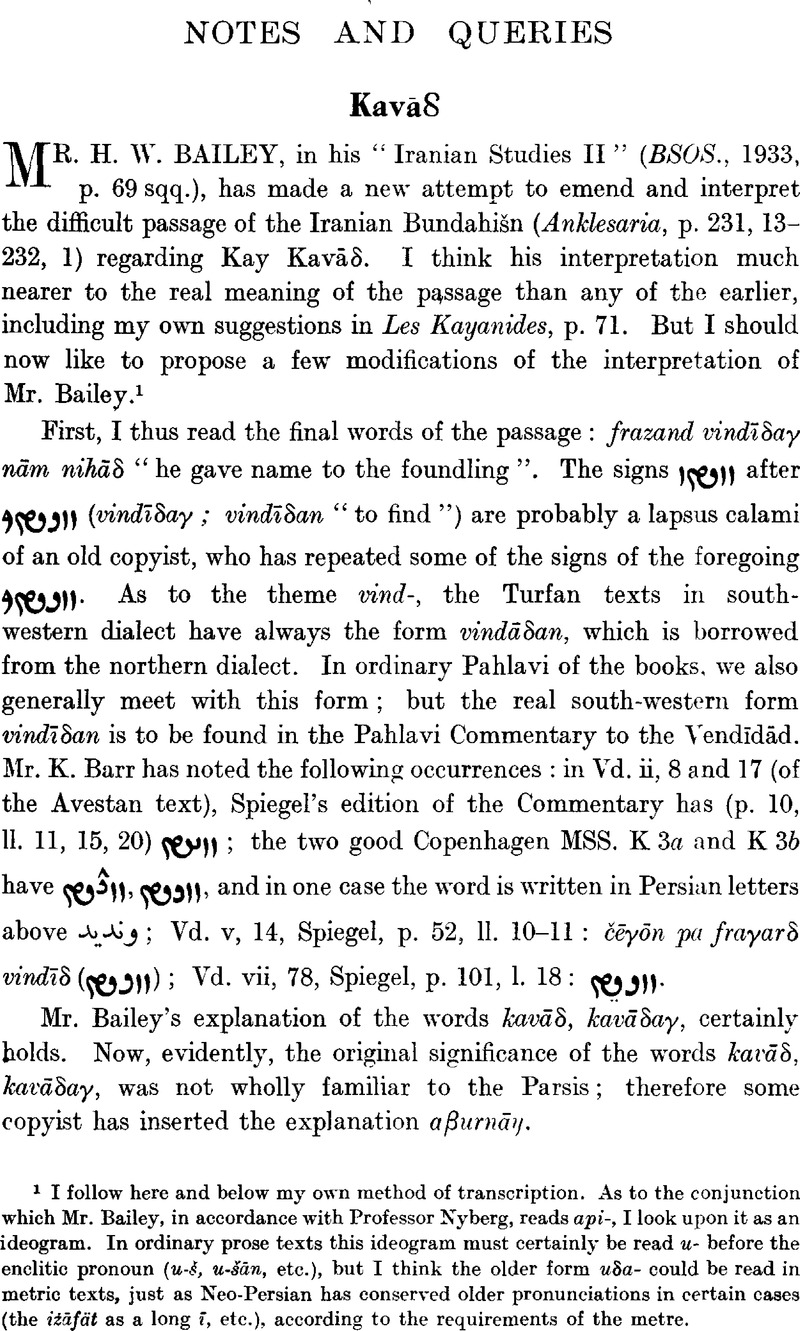No CrossRef data available.
Published online by Cambridge University Press: 24 December 2009

1 I follow here and below my own method of transcription. As to the conjunction which Mr. Bailey, in accordance with Professor Nyberg, reads api-, I look upon it as an ideogram. In ordinary prose texts this ideogram must certainly be read u- before the enclitic pronoun (u-Š, u-Šān, etc.), but I think the older form uδa- could be read in metric texts, just as Neo-Persian has conserved older pronunciations in certain cases (the iźāfät as a long Ī, etc.), according to the requirements of the metre.